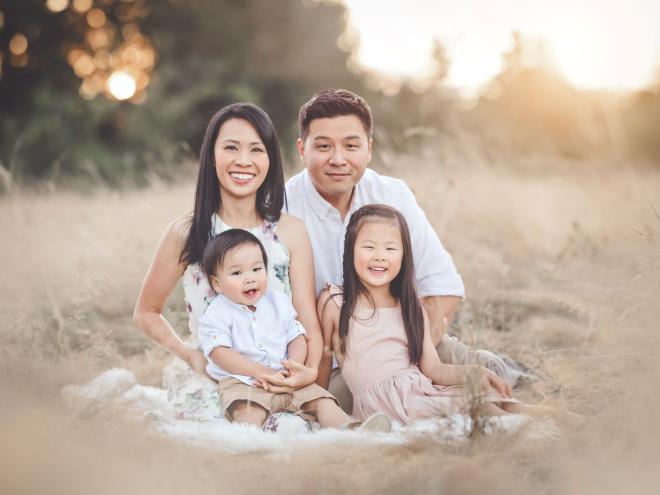Dr Tiffany Wong, an allergist in the Division of Allergy and Immunology at BC Children’s Hospital and the mother of two young children, is currently a Hudson Scholar in Pediatric Medicine, a competitive mentored career development program for junior physicians at BC Children’s. The program allows her to reserve one day a week to work on a variety of quality improvement projects, that she has primarily centered on penicillin allergy de-labelling. Having begun her education in pharmacy school before switching over to medicine at UBC, she’s enthusiastic about the physician-pharmacist partnership in advancing patient drug safety efforts.
Dr Wong explains that the symptoms erroneously attributed to penicillin allergy, such as diarrhea and rash, are often simply side effects of the medication, or symptoms of the illness for which it was prescribed.
“A true allergy to penicillin has lifelong repercussions on a patient’s care, requiring the use of antibiotic alternatives that may be less effective and more expensive. This is why it’s important to weed out false diagnoses,” she said.

As part of her efforts to do so, Dr Wong has worked on a variety of initiatives including collaborating with other allergists and multi-disciplinary teams from the BC Centre for Disease Control and BC Women’s Hospital to develop penicillin de-labelling programs featuring a targeted assessment based on patient history, skin testing, and oral drug challenges. Research emerging from that system revealed that at BC Children’s Hospital, 91 per cent of 104 “penicillin allergic” patients assessed between July 2016 and May 2018 were found to have been incorrectly labelled. The team at BC Women’s Hospital found that 100 per cent of 66 pregnant patients assessed between July 2019 and March 2020 were successfully de-labelled from penicillin allergy.
Working with clinical and research teams made up of allergists, infectious disease specialists, pediatrics, family physicians, and pharmacists, Dr Wong developed and published Canadian guidelines on assessing risk and management of patients labelled with a penicillin allergy. Other published guidelines for penicillin de-labelling already exist; however, busy health care providers don’t necessarily have the time to consult written materials and corroborate every penicillin allergy claim.
In response to the need to make this information more accessible to doctors, Dr Wong and her team spearheaded a “point of care assessment tool,” which is freely accessible to health care providers via their cellphone or computer. The tool leads doctors to a real-time questionnaire where they can enter the patient’s responses on the spot, and get their risk category as well as recommendations for management. If a patient is low risk, for example, the tool provides instructions for an in-office oral challenge. If the patient is high risk, the tool will recommend referring them to an allergist for an assessment based on urgency, and link to cross-reactivity tables for the safe selection of alternative antibiotics.
With the input of stakeholders, Dr Wong worked with the team at Spectrum – an Antimicrobial Stewardship mobile platform used by BC Women’s and Children’s Hospital – to create and adjust the tool’s algorithm until it was ready to be launched.
This Penicillin De-labelling Tool is on the Spectrum app, and is available here. It’s currently rolling out across BC, with a cross-Canada launch expected later on.
“This is the result of teamwork from a large, diverse group of physicians and pharmacists interested in penicillin de-labelling. I am simply the coordinator,” she says.
Dr Wong’s teams have produced an informative website and teaching video to promote the use of the mobile assessment tool and the penicillin allergy de-labelling project generally. This summer, Dr Wong will supervise a summer student intern with the BC Patient Safety and Quality Council to develop the patient resource section of the website. She’s also working with a research team to design a survey for health care providers on their level of confidence and experience with penicillin de-labelling in order to identify education and practice gaps in this area.
“Penicillin de-labelling requires enthusiasm and motivation from many healthcare providers in various practice settings,” she says. “It’s a well-recognized public health problem and anyone who can put a label of penicillin allergy on a patient can also be involved in avoiding and removing erroneous labels. Instead of perpetuating a label of penicillin allergy, we encourage physicians to use the assessment tool, which has been developed with busy practitioners in mind.”
